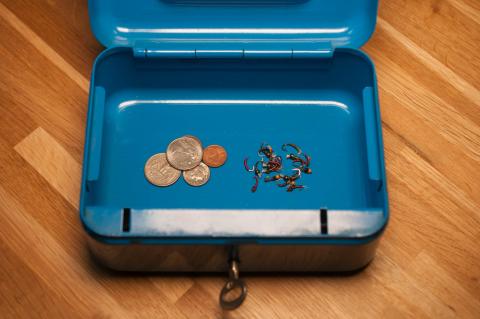Recent comments
teo korihot wait to kill the mood and you woudnt need to go to the store after you have the matierials
- Log in to post comments
Psst! Anyone want to buy some depleted uranium? It's REALLY hot. Nuke those trout good. ;-)
- Log in to post comments
....Well done Rolandas, it realy was a pleasure to read your article,remembers me on my first fishing and travel experiances in South america......nice catches and good pictures .Rolandas, i am planing to fish lago Strobel but got no idea how to contact Estancia ,Pecho Blanco' do you still have a phone nr of this guyes to contact them? Or anything like this??Thanks a lot and tight lines Sven
- Log in to post comments
rado you could even use a single hook for this fly and you could split the cork in the middle tie a few partridge fibers in tie off put the cork on fire like you did then put the cork on the hook and glue it down
- Log in to post comments
Good Morning Bob;
I have a fly fishing workshop in Patagonia for many years and the amount of fly rods and I buy in USA.
Let me know if you can give me information because I want to make my rods and reels carriers need some direction where to buy bar nickel silver and wood inserts.
I have in my workshop tools to make it as a lathe.
Thanks for your time and I look forward to your prompt response,
Diego.
P.S. Searching the internet I found your address and I liked his work in the reel seat and a lover of natural wood'm also a fan of fishing with Bamboo.
- Log in to post comments
mate you seem to have some good fishing, luckey for me i have a river near by where we can catch pike , roach, chub ( a lot of big resident chub) on the fly, the biggest i had so far is a 5lb chub. Bro you take some amazing pictures, there not one picture here on your site that i dont like, they are truely amazing...keep up the good work....
- Log in to post comments
It would be very helpful if hook manufacturers were to further identify specific hooks with their dimensions of gap/length in mms.
For example Mustad 9671-6-6/18, or a 9672-6-6/20, the gap being 6mms, the body length 20mms.
The 2x or 3x long being somewhat redundant today with the wide variety of hooks available. And the odd habit of calling some hooks "wide gap". Surely a wider gap only really means a larger hook size on a smaller body length, such as 1x or 2x short.
Hooks can be confusing with such titles as long shank and short shank, how long is long, and how short is short?
- Log in to post comments
hi..i just love your work..or should i say, your art. i would love to learn this amazing art of fishing fly tying.. So i appreciate the good work you're doind. thank's my friend. To bad i have no credit card...
Dale,
Most muddlers are excellent sculpin imitations, and this one will be fine for your purpose. But you might also consider a more elongated and maybe weighted pattern such as the FMJNM, the Zuddler or a tube tied muddler or a pattern such as The Bow River Bugger. Another option is a large zonker streamer, which is a bit easier to tie.
Martin
- Log in to post comments
Great articel! The opening paragraphs were especially appropriate as I have been standing in the middle of a large group of 'boiling' mullet this week without a single take!
You've certainly given me something to think about - thanks again!
- Log in to post comments
ok i have a question i live in montana in the usa... and i am going to float the yellowstone river where the shields river dumps into the yellowstone and in that are there are scuplins galor and in the fall when brown trout go up to the shields river to spawn and they eat scuplins and scuplins so i was wondering what patterns you would reckamend
- Log in to post comments
Jason,
Do you mean how loose the knot can be tied or how long the tags can be - or something else?
To address the first two in one: the knot has to be pretty snug and tight. I usually work the loops of backing towards the loop in the fly line while tightening. When the knot is tight, you can trim both lines very close to the knot.
Or did you mean something else?
Martin
Yup, first timer, took a couple of goes, but very simple indeed. Just one question how much loose can there be at either on the ends - assuming backing to fly-line
Derek,
A chub is a freshwater fish found in Europe. It's known as Cyprinus cephalus or Leuciscus cephalus in Latin and is a popular quarry in many countries - especially in Eastern Europe. It's found in many streams, grows big (up to almost 2 feet!) and takes flies readily.
You can read more here on GFF as well as on FishBase.org
Martin
- Log in to post comments
Dear Sirs,
I am looking for a quality rod joints for my split cane rods. Do You have, or do you know where I could get them ?
regards, Ilkka Virta
- Log in to post comments
Thanks for the foam fly. I tye it in a larger size with shorter legs and red fish love it also
- Log in to post comments
Hi Henning,
great fish (and picture as well), congratulations from my side. What do I learn from this? That it is not true that I can't be jealous...
Regards,
Ole
- Log in to post comments
Fahad,
We do not produce or sell this product. Contact the manufacturer. Click on the image to return to the article and find more information there - such as the price.
Martin
Is this print available for purchase? You are very talented.
"Brown Trout takes a dry fly"
please i want to know more about this item and the price also more about your products

